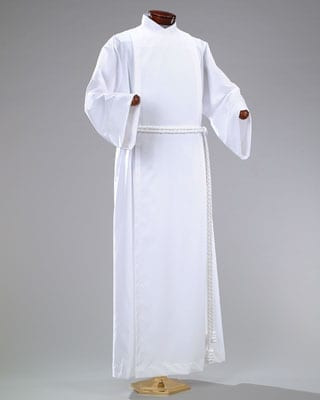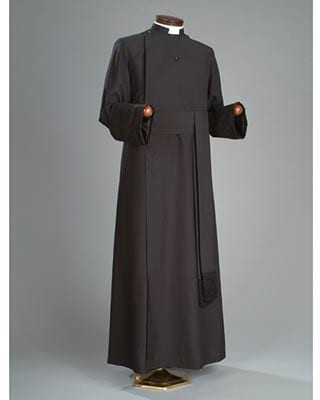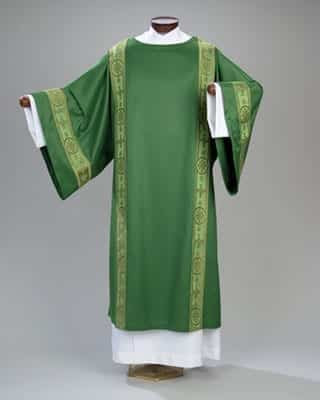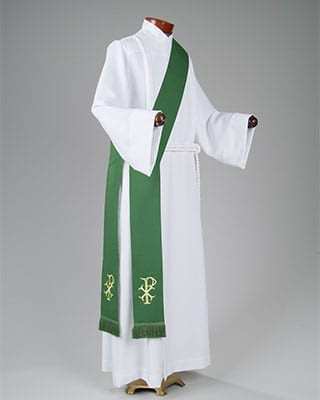Anglican vestments can initially appear perplexing, especially to newcomers. Walking into an Anglican church, you might observe clergy and other ministers adorned in various robes – white garments, colorful scarves, and sometimes layers of vibrant materials. This array of attire might bring to mind academic graduations or theatrical costumes, leaving many wondering about the meaning and purpose behind these garments. What are these robes, and why are they worn? This guide will demystify the Anglican “Priest Uniform,” offering a clear understanding of the vestments you’ll commonly see.
Like many entering an Anglican church for the first time, questions about the robes are natural. What are they called? What do they signify? Having worn these vestments for nearly a decade, primarily on Sundays, I can offer some basic insights into Anglican vestments. This isn’t an exhaustive, expert-level exploration, but rather a guide to the essential, visible aspects of what constitutes the Anglican priest uniform.
Note: Images in this article are sourced from C.M. Almy’s for illustrative purposes, without any sponsorship or affiliation.
The Core Concept of the Priest Uniform: Symbolism and Function
The foundational idea behind the Anglican priest uniform, or vestments, is to symbolize order, office, and role within the church. This concept mirrors the function of uniforms in broader society. Think of a police officer’s uniform, a nurse’s scrubs, or a military uniform. These are not expressions of personal style, but rather standardized attire that immediately communicates the wearer’s role, authority, and function. Similarly, priest uniforms in the Anglican tradition adhere to specific designs and patterns, devoid of personal or extraneous messaging, focusing instead on the sacred duty and service they represent.
Key Components of the Priest Uniform
Let’s break down the individual garments that make up the Anglican priest uniform:
White Overgarments: The Cassock-Alb and Surplice
 Clergy wearing alb
Clergy wearing alb
White robes in Christian tradition have long symbolized purity and the righteousness of Christ. When a priest wears a white robe, it’s a visual reminder that their service stems not from personal merit but from the grace and love of Jesus Christ, who covers them with His righteousness. The two primary white vestments are the cassock-alb and the surplice.
The cassock-alb is a single, full-length white garment, simplifying the vesting process. The surplice, in contrast, is worn over a cassock (described below). Clergy, choir members, altar servers, and other service participants often wear the surplice.
The Black Garment: The Cassock
 Priest wearing cassock
Priest wearing cassock
The cassock, often black, is technically not considered a vestment in the strictest sense. Historically, the cassock (resembling the attire of Neo from The Matrix) was simply everyday street clothing for priests. It is worn underneath the white surplice. While black is most common, cassocks can also be purple or red. These variations serve the same function as the black cassock and are often associated with cathedral churches or canons of a bishop.
Eucharistic Vestments: The Chasuble and Dalmatic
 Deacon wearing dalmatic
Deacon wearing dalmatic
For Eucharistic services, you might see a priest wearing a chasuble. This is a significant piece of fabric, often circular or diamond-shaped with a central opening for the head. The chasuble is worn over the alb during services of Holy Communion (the Eucharist). Deacons wear a similar vestment called a dalmatic. Churches tend to either consistently use these vestments or rarely use them, with little middle ground.
Scarves of Office: The Stole and Tippet
 Deacon wearing stole
Deacon wearing stole
Stoles are essential components of the priest uniform, serving as clear indicators of ordained order and office. A priest’s stole is worn vertically, draped over each shoulder. A deacon’s stole is worn diagonally, from the left shoulder and fastened at the right side. It’s important to note that a black tippet is not a stole. Deacons and priests may wear tippets for non-Eucharistic services or when not actively serving at the altar during a specific service. Lay ministers, readers, or choir members might wear a cassock-alb or cassock and surplice, but typically without a stole, although some traditions include a blue “scarf” for readers, which is not a stole.
The Belt: Cincture
The cincture is a belt worn with the alb or cassock, serving a practical purpose of gathering the garment at the waist. Cinctures are available in band or rope styles and are a functional yet subtle part of the priest uniform.
Colors and the Church Year
The colors of the stole, chasuble, and dalmatic are not arbitrary. They change according to the seasons of the church year, each color symbolizing a different aspect of the liturgical calendar. This rotation of colors adds another layer of meaning to the priest uniform, visually representing the current season and focus of worship.
| Liturgical Color | Season/Occasion | Symbolism |
|---|---|---|
| White | Christmas, Easter, some Festivals, Weddings, Funerals | Purity, joy, light, resurrection |
| Gold | Christmas, Easter, some Festivals | Festivity, glory, majesty |
| Red | Pentecost, Feasts of Martyrs, Holy Week | Fire, Holy Spirit, sacrifice, martyrdom |
| Purple/Violet | Advent, Lent | Penitence, preparation, royalty |
| Green | Ordinary Time | Growth, hope, life eternal |
| Blue | Advent (in some traditions) | Hope, anticipation |
| Black | Good Friday, Funerals (sometimes) | Mourning, solemnity, death |
| Rose/Pink | Gaudete Sunday (Advent), Laetare Sunday (Lent) | Anticipation of joy, softened penitence |
This brief overview of Anglican vestments aims to answer your basic questions about the priest uniform. If you still have questions, please feel free to ask!
Cover photo by Mart Production for Pexels, courtesy of Canva.

